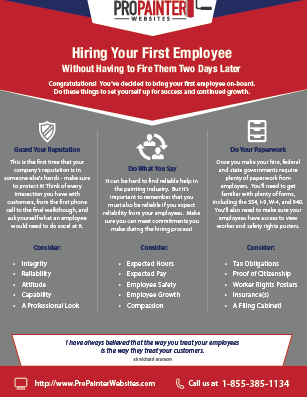Under The Surface Area Of Your Industrial External Paint Job Lies The Essential Function Of Weather-- Discover Exactly How It Can Make Or Break Your Results
Under The Surface Area Of Your Industrial External Paint Job Lies The Essential Function Of Weather-- Discover Exactly How It Can Make Or Break Your Results
Blog Article
Post Writer-Hopper Bladt
When you're planning an industrial external painting task, don't ignore the impact of weather on your outcomes. https://www.kcur.org/arts-life/2022-12-09/after-25-years-away-a-kansas-city-painter-returns-home-to-stretch-out-her-canvas-and-her-ambitions need to consider aspects like temperature level, humidity, and precipitation, as they can make or damage your paint task. For example, did you know that excellent conditions call for specific temperature level arrays and moisture degrees? Failing to monitor these elements can lead to irregular coatings or even damages to fresh paint. Comprehending these components is essential to attaining a lasting, expert result. So, what certain weather conditions should you be wary of?
Temperature level Considerations
When it involves industrial outside painting, temperature plays an important duty in the end result of your job. If https://docs.google.com/spreadsheets/d/1AkcHQ3rLGdIXikt--W6eT4nPzhZvqfPyZACd1-RyjWk/edit?gid=1316055035#gid=1316055035 in severe warm, the paint can dry out too swiftly, causing issues like inadequate bond and unequal coatings. You want to go for temperatures in between 50 ° F and 85 ° F for the best results. Below 50 ° F, paint might not treat effectively, while over 85 ° F, you take the chance of blistering and cracking.
Timing your job with the appropriate temperature levels is necessary. Begin https://drive.google.com/drive/folders/1ivsha1kebvu9xXOo8Nrm3UsDcKIpOYJ-?usp=drive_link in the early morning or later in the afternoon when it's cooler, especially during warm months.
Also, consider the surface temperature; it can be substantially higher than the air temperature, specifically on warm days. Make use of a surface thermometer to check this before you start.
If temperature levels are unforeseeable, watch on the weather forecast. Abrupt temperature level decreases or warm front can derail your plans. You don't want to begin repainting only to have the conditions transform mid-project.
Humidity Levels
Moisture levels dramatically influence the success of your commercial external paint project. When the moisture is too expensive, it can impede paint drying and healing, causing a range of issues like inadequate attachment and end up quality.
If you're preparing a task during moist conditions, you may find that the paint takes longer to completely dry, which can extend your project timeline and boost prices.
On the other hand, reduced moisture can additionally position challenges. Paint may dry too swiftly, avoiding appropriate application and resulting in an uneven coating.
You'll intend to keep track of the humidity levels very closely to ensure you're functioning within the suitable array, normally between 40% and 70%.
To get the most effective results, take into consideration making use of a hygrometer to gauge humidity before starting your project.
If you find the levels are outside the optimal range, you might need to readjust your timetable or select paints designed for variable problems.
Constantly get in touch with the maker's standards for particular suggestions on moisture resistance.
Precipitation Impact
Rainfall or snow can substantially interrupt your commercial external painting strategies. When rainfall takes place, it can remove newly used paint or develop an uneven coating. Preferably, you wish to choose days with completely dry weather condition to guarantee the paint adheres effectively and remedies efficiently. If you're caught in a shower, it's finest to halt the project and wait for conditions to enhance.
Additionally, snow can be a lot more damaging. Not only does it develop a wet surface, yet it can also lower temperature levels, making it difficult for paint to completely dry. This can cause problems like peeling or blistering down the line.
It's critical to check the weather report prior to beginning your task. If rain or snow is anticipated, take into consideration rescheduling.
Always keep in mind to enable sufficient drying time in between coats, especially if the weather condition continues to be uncertain.
Verdict
Finally, watching on the climate is necessary for an effective commercial exterior painting task. By keeping an eye on temperature level, humidity, and precipitation, you can ensure the most effective problems for application and treating. Remember to prepare your work around positive weather condition and always adhere to manufacturer standards. With the appropriate method, you'll accomplish a long-lasting, beautiful coating that can withstand the aspects. Do not allow the climate catch you off-guard-- remain educated and paint smart!
